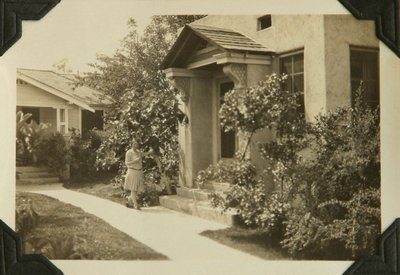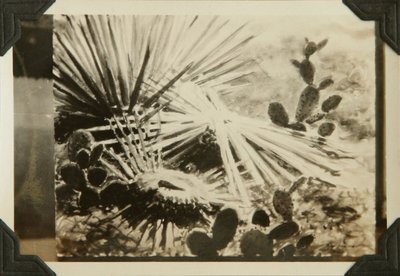By late April, Roger and Betty Hayward had settled into their Pasadena home and began exploring the local landscape. Shortly after his arrival, Roger started working on the new Los Angeles Stock Exchange building. He also began painting scenes from his untrodden California environment on the weekends and after work, focusing on desert landscapes and oil fields. Though he was still showing pieces in New England galleries, Roger quickly found his way into the local area art scene, and his work was mentioned favorably in an August 1929 Los Angeles Times review of a summer art exhibit. He was praised for catching “the California light that fuses the industrial buildings, the black oil, the rusty iron and the dramatic thrust of the derricks above the torn ground in glowing harmony.” A few years later Roger joined the California Watercolor Society and held positions as Recording Secretary and Treasurer.
Roger was present for the groundbreaking ceremony of the Los Angeles Stock Exchange on October 21, 1929, for which he had completed the original design as the delineator under Sam Lunden. The structure was finished by November of the following year, and Roger was particularly proud of his influence on the Exchange’s large bronze front doors and ornamental plaster allegorical panels on the ceiling of the entrance lobby. After his first West Coast endeavor was completed, Roger contributed additions to the interiors of another Cram & Ferguson project, designing two alters and sacred emblems for the walls of the Church of St. Vincent de Paul in 1930.
A prominent feature of the Haywards’ new Pasadena home was a cottage in the back where four graduate students had moved in, one of whom was Bradley Lewis, a man with whom Roger would later partner in the development of various patents. Through conversations with his new neighbors, Roger’s passion for alternative academic disciplines was reignited. So it was that Roger’s interest in astronomy, math and optics began to take shape in 1929, strengthened in magnitude by two seasons of Caltech lectures given mostly by staff from the nearby Mt. Wilson Observatory. Conversations with his graduate student neighbors and subsequent visits to various Caltech facilities also led to Roger’s introductions with E. T. Bell, Ted Kurth and Linus Pauling, with whom he would collaborate on many publishing projects later in life.

Betty Hayward posing in front of her home, 1929. More images here

Still life watercolor by Roger Hayward of cacti, ca. 1929-1930s. More images here

Los Angeles Stock Exchange building, designed by Roger Hayward. More images here
